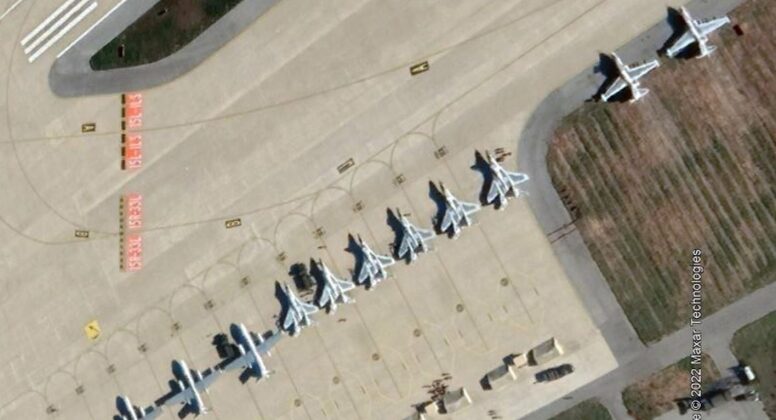News
North Korea Has Been Expanding and Modernising this Key Airfield: Are New Fighter Jet Deliveries Incoming?

Although the most conspicuous areas of North Korea’s military modernisation efforts have been its ground forces and strategic missile forces, with the former receiving new generations of equipment ranging from uniforms to armour and artillery while the latter made the country only the third in the world to field hypersonic glide vehicles from 2021, the air force has also gained investment for modernisation. Among the country’s armed services the Korean People’s Army (KPA) Air Force has struggled the most with modernisation efforts over the past 30 years, largely due to the fact that combat aircraft are the area where North Korea’s defence sector is least self reliant while ground equipment, surface combatants, and both strategic and tactical submarines have long been produced domestically. Limited air force inventory modernisation has included indigenous production of transport aircraft, most notably lightweight radar evading propeller driven craft for special forces missions, as well as a fast growing range of drones. The country previously also produced MiG-29 fighters under license with Russian support, which began in the 1990s and saw over 20 fighters built in Korea at a conservative estimate. The state of this production line over the past decade, and whether it has continued to receive Russian support and inputs, remains uncertain. Both drones and the fighter fleet have been highlighted by the Korean leadership in recent years as areas where modernisation efforts should be focused.
A notable indicator of North Korean interest in modernising its air force, and its fighter fleet in particular, has been the work initiated in 2021 at one of its most critical air bases, Sunchon Airfield located 45 kilometres northeast of Pyongyang, where the main runway was successfully lengthened and the aircraft shelters, aprons and taxiways improved. Sunchon previously hosted the KPA Air Force’s most modern classes of tactical combat jet the MiG-29 fighter and Su-25 attack jet, both of which were first acquired from the Soviet Union in the late 1980s. While state of the art at the time, the extent of modernisation over the past three decades remains unknown and their ability to seriously threaten U.S. or South Korean fighter units armed with new fifth generation aircraft has been brought to serious question. The limited capabilities of its fighter fleet has led North Korea to invest more heavily in ground based air defence systems, such as the long ranged Pyongae-5 (KN-06) which entered service in 2017, and in assets capable of striking enemy airfields such as KN-23 ballistic missiles, to asymmetrically compensate for its disadvantages.

The runway at Sunchon is estimated to have been extended to approximately 2800 metres, with a new north apron having been constructed. Most notably, however, a new taxiway appears to lead directly from the north apron to an underground facility inside a hill adjacent to the airfield. North Korea has long built storage facilities and at times even entire airfields underground, and provided assistance constructing such facilities to Vietnam and China in the past, which reflects part of its broader expertise in constructing fortifications against aerial bombardment. While it is expected that MiG-29s and Su-25s will return to Sunchon Airfield after work on the facility is completed, whether the KPA Air Force will be able to acquire new combat aircraft from abroad remains highly questionable. Western drafted sanctions resolutions passed through the United Nations Security Council prohibit the sale of armaments including combat aircraft to North Korea, although so long as those aircraft provided are from classes that the country already fields such sales could well be deniable.
As North Korea has moved to strengthen defence ties with neighbouring Russia, and the Russian backed self proclaimed Donetsk and Luhansk people’s republics, the possibility that Russia will consider resuming deliveries of MiG-29s or other fighter classes to North Korea, possibly MiG-23s or MiG-21BiSs which the country also acquired in the 1980s and 90s respectively, cannot be ruled out. Russia is thought to have hundreds of MiG-29s in storage, along with at least some MiG-23s and possibly a number of MiG-21s. The KPA in turn is according to Russian sources set to deploy assets to support the Russian-led war effort in Eastern Ukraine which began in February and may provide important opportunities for Pyongyang to form new partnerships, gain key combat experience and undermine Western efforts to isolate it.












